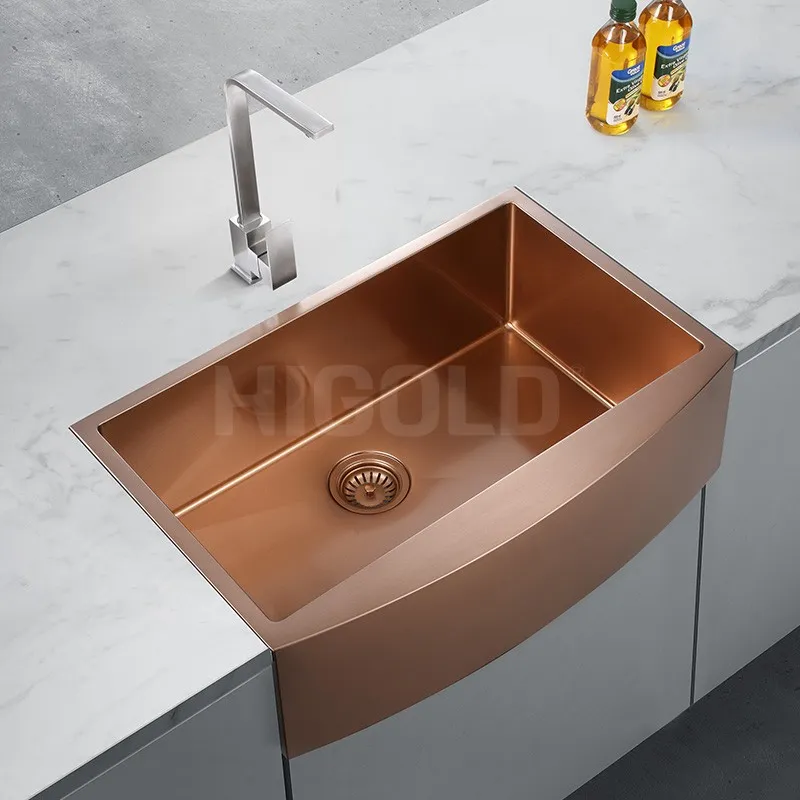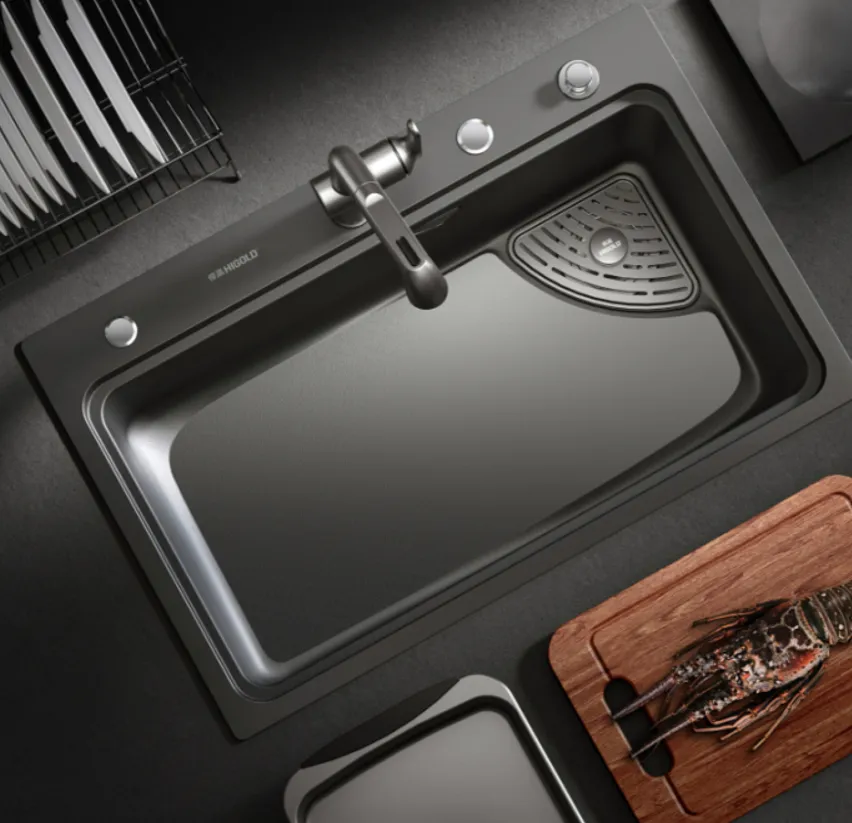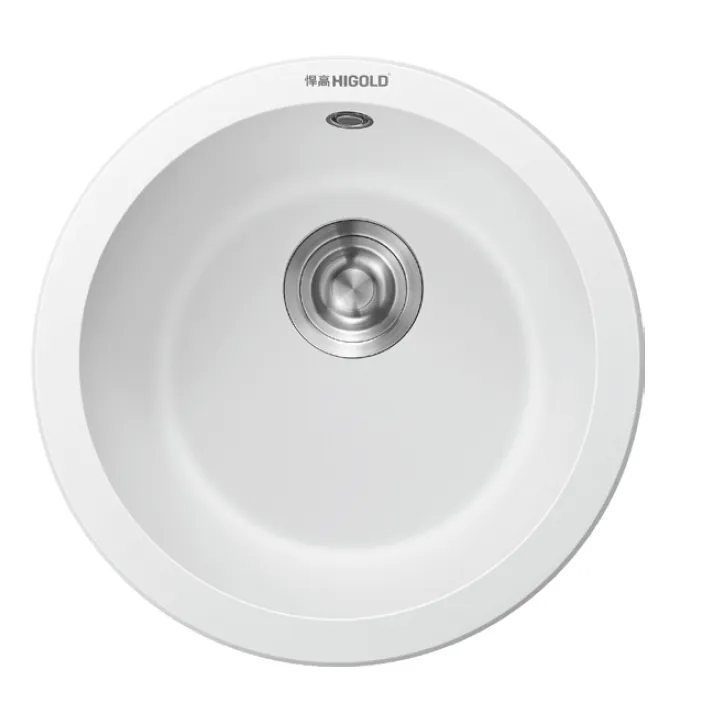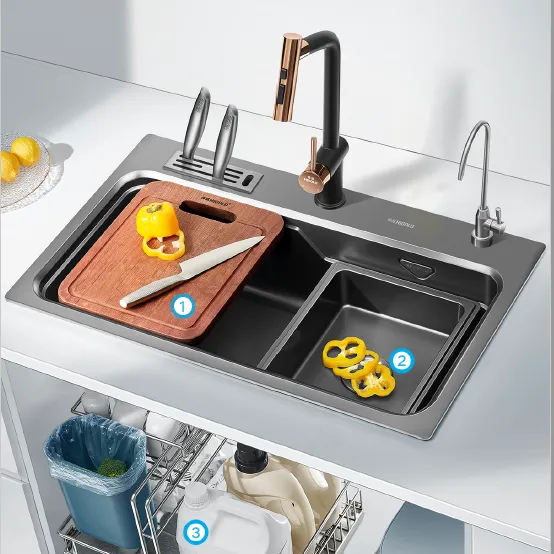The sink is not only an important tool for daily cooking and washing ingredients, but also often one of the focuses of kitchen design. When consumers choose a sink, they not only pay attention to the material and quality of the sink, but also pay special attention to the choice of its shape. The shape of the sink directly affects the functionality, space utilization and aesthetics of the kitchen. Therefore, choosing which shape of sink has become a problem that every family must consider in kitchen design.
At present, there are many shapes of sinks on the market, including rectangular kitchen sinks, round sinks, semi-circular sinks, corner sinks, etc. Each sink shape has its own unique advantages and disadvantages, adapted to different kitchen needs and space layouts.
This article will analyze the characteristics of sinks of different shapes in detail to help consumers make more appropriate decisions when purchasing kitchen sinks and find the best sink shape that best meets their personal needs.

What are the selection criteria for sink shapes?
When choosing the shape of a kitchen sink, there are several key criteria to consider:
● The size and layout of the kitchen space: sinks of different shapes are suitable for kitchens of different sizes and layouts. Choosing the right shape can make better use of space.
● Functionality of the sink: Sinks of different shapes can provide different usage experiences for the kitchen, affecting the washing of ingredients, the disposal of kitchen garbage and the cleaning of the sink.
● Aesthetics and decoration style: The shape of the sink needs to be coordinated with the overall decoration style of the kitchen. Choosing the right shape can enhance the overall aesthetics.
● Budget and feasibility: Some special-shaped sinks may need to be customized, and the price will also be different. Considering the budget constraints, it is particularly important to choose a sink shape that fits the budget.
● Maintenance and cleaning: The shape of the sink also needs to consider the convenience of cleaning and maintenance. Some sinks have complex corner designs, which may easily accumulate dirt and make cleaning more troublesome.

Which shape of kitchen sink is the best?
1. Rectangular kitchen sink
Rectangular kitchen sink is one of the most common sink shapes on the market. Rectangular kitchen sinks can be found in almost all kitchens. Its shape is simple and generous, suitable for various kitchen styles, especially modern and minimalist kitchens.
Advantages of rectangular kitchen sinks:
● High space utilization: The rectangular kitchen sink has a simple design and is suitable for kitchens of all sizes, especially in kitchens with larger spaces. The rectangular sink can provide more operating space and is suitable for washing large tableware and pots.
● Easy to clean: Since there are no complicated curves or corners, the surface of the rectangular kitchen sink is relatively flat, which makes it easier to clean, especially to clean stains on the edge of the sink.
● Versatility: The rectangular kitchen sink can be easily used with various kitchen countertop materials, and is generally equipped with multiple sink notches, which can be washed in different areas to increase the functionality of the sink.
Disadvantages of rectangular kitchen sinks:
● Space occupied: Although the rectangular kitchen sink performs well in functionality, it occupies a large space and may not be suitable for families with small kitchen space or who need to save operating countertop space.
● Single appearance: Although the appearance of the rectangular kitchen sink is simple, it may appear slightly monotonous compared to some modern kitchen designs. In families who pursue individuality and unique design, the rectangular sink may not be visually impactful enough.
2. Round kitchen sink
Compared to rectangular sinks, round kitchen sinks are softer in design and are often seen in kitchens with unique styles or aesthetics. It has an elegant appearance and smooth lines, making it very suitable for modern or light luxury kitchens.
Advantages of round kitchen sinks:
● High aesthetics: Round kitchen sinks have a unique, simple appearance and are highly decorative, which can add elegance and modernity to the kitchen, especially for families who pursue unique visual effects.
●Avoid sharp corners: Round kitchen sinks have no sharp or acute corners, which can avoid injuries or scratches caused by sharp corners compared to rectangular sinks, especially for families with children.
● Space saving: The design of round kitchen sinks is relatively compact, suitable for kitchens with smaller spaces, and can provide sufficient usage functions in a limited space.
Disadvantages of round kitchen sinks:
● Smaller volume: Compared with rectangular kitchen sinks, round kitchen sinks are usually smaller in volume, and you may feel a lack of space when washing large dishes or pots. Therefore, for families who need to wash a lot of items, round sinks may not be the best choice.
● Difficult to clean: Due to its curved design, a round kitchen sink may not be as convenient to clean as a rectangular sink, especially at the corners of the sink edge and bottom, where stains are easily accumulated.

3. Semi-circular kitchen sink
A semi-circular sink is a shape between a rectangular kitchen sink and a round sink. Sinks that usually adopt a semi-circular design not only have a certain uniqueness in appearance, but also provide better functionality.
Advantages of a semi-circular kitchen sink:
● Unique visual effect: The design of a semi-circular sink visually retains the softness of a circle while providing a certain amount of operating space. It can add an artistic touch to the kitchen and is suitable for families who pursue fashion and unique designs.
● Better water flow distribution: A semi-circular sink can distribute water flow more evenly, avoiding the problem of water flow deviation and improving the convenience of using the sink.
● Adapt to a variety of kitchen styles: A semi-circular sink can match a variety of kitchen styles, especially for families who need both beauty and practicality.
Disadvantages of semi-circular kitchen sinks:
● Limited operating space: Compared with rectangular sinks, semi-circular sinks have smaller operating space and may be limited when washing large items. Therefore, although its appearance is very distinctive, it may affect the convenience of operation in daily use.
● Difficulty in maintenance and cleaning: The curved design of the semi-circular sink will increase the difficulty of cleaning, especially the water accumulation and stains on the edge of the sink may be difficult to completely remove, increasing the maintenance cost.
4. Corner kitchen sink
The corner kitchen sink is designed to be located in the corner of the kitchen to save space to the greatest extent. It is often used in kitchens with smaller spaces, which can effectively utilize the corner area and allow other parts of the kitchen to get more storage and work space.
Advantages of corner kitchen sinks:
● Maximize space utilization: The corner kitchen sink can maximize space utilization, especially for families with smaller kitchen areas, and can convert the corner space into an effective use area and increase the available area of the operating table.
● Save countertop space: Corner kitchen sinks can effectively separate the sink from other kitchen facilities, saving countertop space and making the entire kitchen layout more reasonable, especially suitable for small kitchens or open kitchens.
Disadvantages of corner kitchen sinks:
● Not suitable for bulk cleaning: Corner kitchen sinks are usually small in size and are not suitable for handling bulk dishes or pots. For families who need to wash large items frequently, corner sinks may not be very practical.
● Difficult to clean: Due to the relatively hidden location of the sink, cleaning a corner kitchen sink may become less convenient, especially where the sink contacts the countertop, stains are easy to accumulate.
5. Double-bowl kitchen sink
Double-bowl kitchen sinks are a very common design in the kitchen. They can perform two different operations at the same time, such as washing and rinsing, to improve the efficiency of the sink.
Advantages of double-bowl kitchen sinks:
● Versatility: Double-bowl kitchen sinks can perform two different operations at the same time, increasing the functionality of the sink, especially for families who need to wash ingredients, pots and tableware frequently.
●
Suitable for family needs: For large families or families who cook frequently, double-bowl kitchen sinks provide greater convenience, can handle different tasks at the same time, and improve work efficiency.
Disadvantages of double-bowl kitchen sinks:
● Takes up more space: The design of double-bowl kitchen sinks requires more countertop space and may not be suitable for small kitchens. Its installation requires more countertop area, which may not be ideal for kitchens with limited space.
● Troublesome cleaning: The design of double-bowl kitchen sinks requires cleaning work in each trough to be done separately, which increases the complexity of daily maintenance.

How Can I Ensure Timely Delivery When Ordering from Higold?
With a production capacity that exceeds 25,000 steel sinks monthly, Higold ensures on-time delivery for orders placed. Our dedicated team works hard to ensure your purchasing process is smooth, from initial inquiry to final product delivery. We strive to maintain affordable prices while ensuring fast turnaround times.


